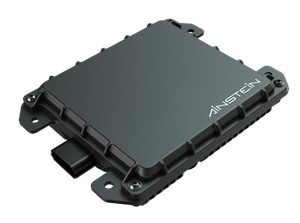Jan 16 2019
On January 14th, 2019, Ainstein, a pioneer in intelligent radar systems, announced the launch and availability of the K-79 autonomous automotive imaging radar sensor.
 Ainstein K-79 Imaging Radar. (Image credit: Ainstein)
Ainstein K-79 Imaging Radar. (Image credit: Ainstein)
It is the first-ever commercially available sensor validated and optimized for autonomous working of vehicles in dangerous conditions, for instance, extreme dust and low light. It has been developed for use in tractors, self-driving industrial trucks, and similar specialty vehicles.
There is an urgent market need for sensors that provide LiDAR-like images, but that can function effectively where LiDAR is compromised, such as extremely bright, extremely dim, dusty and similar conditions. These extreme conditions can make existing camera and LiDAR solutions unreliable. For industry to adopt autonomous driving technology, it is essential that functionality is near flawless in all environments.
Andrew Boushie, Vice President, Strategy and Partnerships, Ainstein.
How It Works
The Autonomous Automotive Imaging Radar K-79 from Ainstein generates a detailed, high-resolution point cloud of the surroundings of a vehicle for both moving objectives, for example, other vehicles, bicycles, and pedestrians, as well as stationary objects, such as idled equipment, railings, and buildings. Following are the other important features:
- Identifies the location of objects and offers information related to speed, range, elevation, and azimuth
- Develops a 2D point cloud mapping of surroundings
- Has the ability to create 3D shapes of detected objects, providing LiDAR-like image quality even under poor conditions
- Enables the use of target classification for differentiating between pedestrians and vehicles
This functionality paves the way for endless possibilities for all kinds of autonomous vehicles, such as sweepers, self-driving excavators, forklifts, shuttles, snow removers, agricultural equipment, and more. A tailored sensing solution based on K-79 is being piloted at present by a market-leading organization to automate mining excavation and material removal.
The K-79 integrates sophisticated algorithms in imaging and localization, as well as radar system design, thereby enabling Ainstein to capitalize on inexpensive commercial radar components to offer a 4D radar point cloud with the granular details of surroundings like never before and at a fraction of the cost of LiDAR systems.